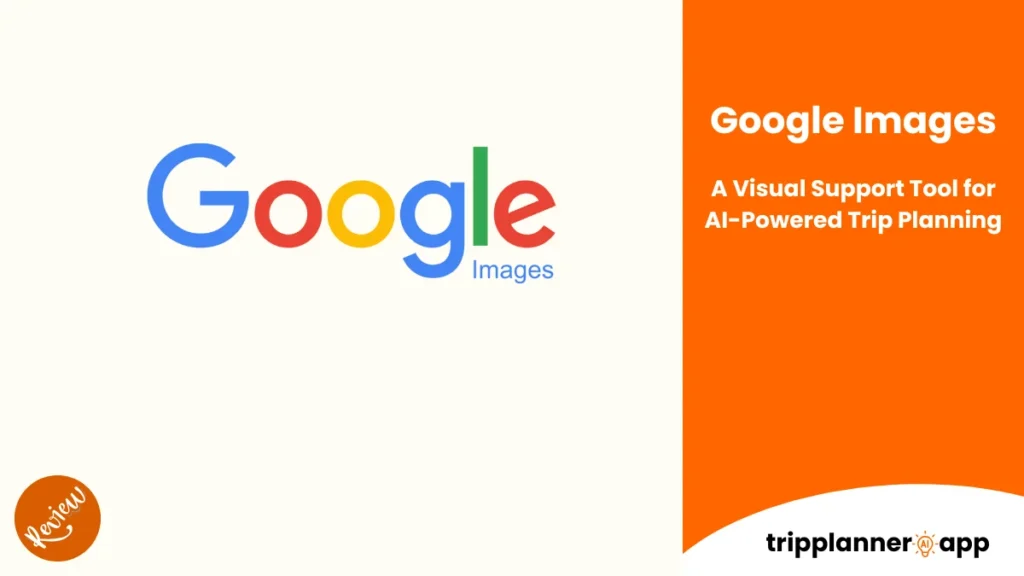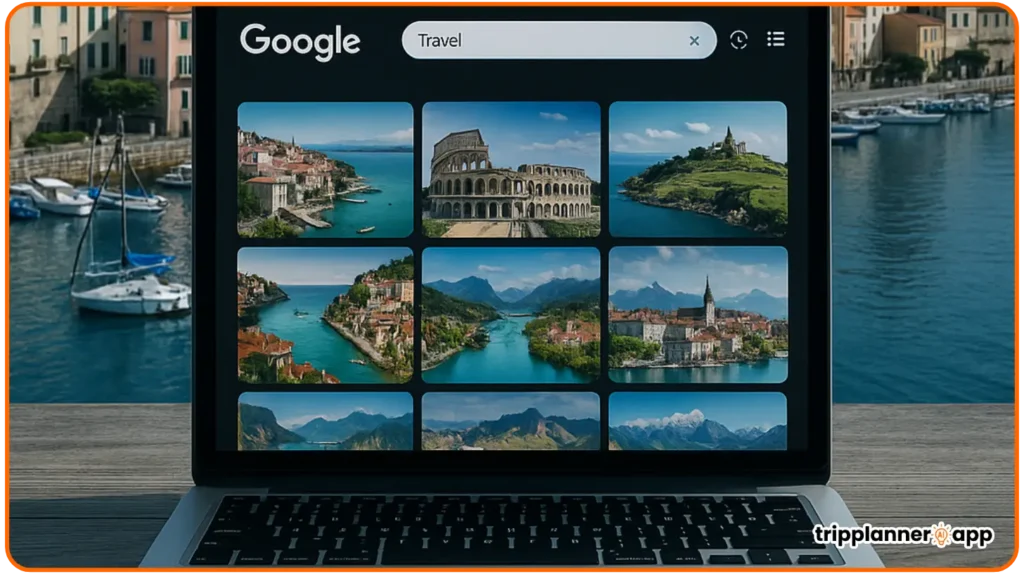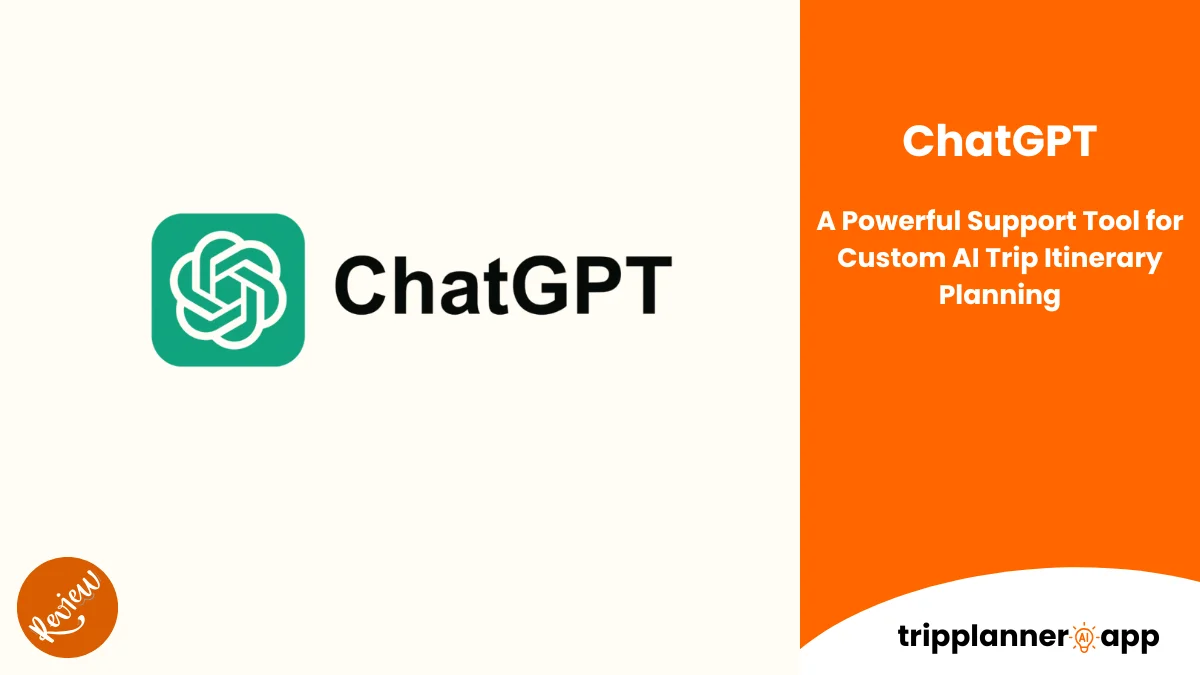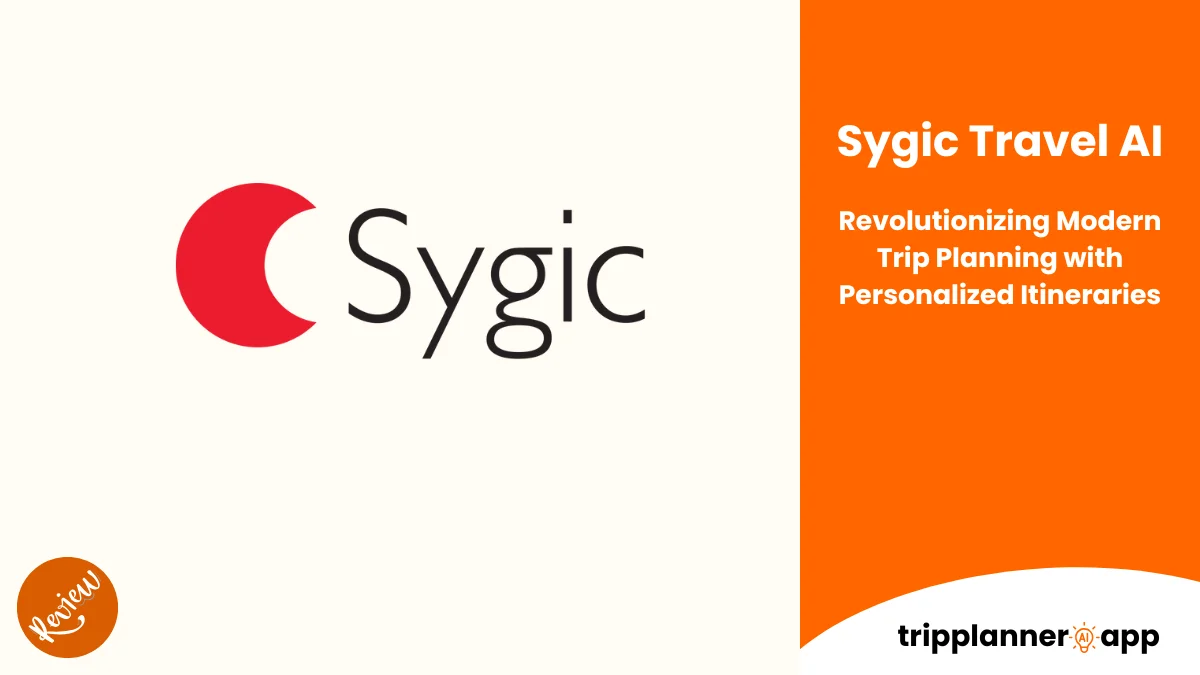As travelers continue to seek personalized and engaging experiences, the marriage between visual search technology and AI trip planning tools becomes pivotal. Google Images, a powerful visual search engine, plays an integral role in revolutionizing how travelers plan their journeys. By leveraging its vast database of images, Google Images transforms the way we discover, explore, and decide on travel destinations. This tool empowers users to visualize potential destinations, compare attractions, and ultimately enhance their travel itineraries with visually appealing content.
Introduction
Google Images has been instrumental in the digital space, particularly in the realm of travel planning. Aiding millions in their quest for the perfect vacation, this visual search engine offers unique insights and inspiration that text-based searches simply cannot match. With the integration of advanced AI-powered tools, users can now experience a new dimension of trip planning that is both interactive and visually immersive.
What is Google Images?
Google Images is an intuitive image-based search tool developed by Google to facilitate quick and easy access to visual data from the internet. This indispensable tool empowers users to locate images related to specific queries, providing a visual context that enhances understanding and decision-making.
- Features: Google Images enables searches by using various criteria such as size, color, type, and usage rights, making it easier for users to filter and find the right images.
- Compatibility: The platform’s user-friendly interface supports multiple devices, from desktop computers to smartphones, ensuring that users have access to visual content anytime, anywhere.
- Integrated Tools: Google Images also offers features such as Google Lens, which allows users to perform searches using their own photos or screenshots to find similar images or identify objects within pictures.
- Key Benefit: By focusing on visuals, Google Images provides users with a richer understanding of topics, enabling them to make more informed decisions based on real-world imagery.
This powerful tool is especially relevant for travel enthusiasts and professionals who rely on visuals for content creation, itinerary planning, and promotional activities.
Why Visual Search Matters in Itinerary Planning
Visual search has become a cornerstone in modern itinerary planning, largely due to its ability to present information in a more engaging and comprehensive manner. Unlike traditional text searches, visual search taps into the human brain’s natural affinity for images, making it easier to digest complex information.
- Emotional Connection: Images evoke emotions and can inspire travelers to visit destinations they hadn’t previously considered. Seeing a vibrant image of a destination can trigger a desire to experience that place firsthand.
- Decision-Making: Visual comparison of multiple destinations or attractions can aid in decision-making by allowing users to assess aesthetics, crowd levels, and overall ambiance.
- Trend Alignment: The rise of social media platforms like Instagram has made visuals a primary medium for sharing experiences, which in turn drives attention to visually appealing destinations.
- Efficient Planning: By visually exploring a destination in advance, travelers can prioritize their interests and plan more efficiently, ensuring a more tailored and satisfying experience.
The importance of visual search is underscored by its increasing use in itinerary planning, converting inspiration into actionable travel plans.
How it Complements AI Trip Planner Tools
Google Images serves as a fundamental component in enhancing AI trip planner tools, providing a seamless interface for the integration of visual data into personalized itineraries.
- AI Personalization: AI algorithms can analyze patterns in the images users interact with, crafting personalized travel itineraries that cater to individual preferences and interests.
- Rich Visual Context: By incorporating images from Google Images, AI tools can present users with a vivid representation of potential travel experiences, bridging the gap between abstract planning and tangible visualization.
- Automated Suggestion: AI trip planners can leverage Google Images to suggest activities, accommodations, or destinations users might enjoy based on their browsing history and engagement with certain images.
- Enhanced Interaction: The synergy between Google Images and AI planners fosters an interactive planning environment, allowing users to refine their plans with fewer manual inputs while experiencing a visually enriched journey.
This collaboration not only enhances the planning process but also ensures that the resulting itineraries resonate more closely with the user’s unique expectations and travel objectives.
Key Features of Google Images for Travel
As highlighted in the introduction, the integration of Google Images within AI trip planner tools creates exciting possibilities for travelers. The following sections delve into specific features of Google Images that facilitate travel exploration and itinerary development.
Visual Search by Location, Landmark, or Keyword
Google Images allows for targeted visual searches using criteria such as location, landmarks, or specific keywords, providing a focused approach to discovering travel insights.
- Location-Specific Searches: Travelers can input queries such as “Eiffel Tower at night” or “Great Wall of China sunrise” to receive a variety of images showcasing these iconic landmarks.
- Keyword Relevance: By using descriptive keywords, users can find images that closely align with their interests, bringing to life the experiences they wish to have.
- User Interface: The search results page is designed to offer a clean, intuitive experience, with images displayed in a grid format for easy browsing.
- Comparative Analysis: Users can effortlessly compare images from different locations to decide which sights or experiences are most visually appealing for their itinerary.
This targeted approach empowers travelers to sift through a wealth of visual information, refining their search and focusing on images that resonate with their travel aspirations.
Filters by Size, Time, Usage Rights, and Format
To enhance the efficiency and precision of image searches, Google Images offers a variety of filters that cater to different needs and requirements.
- Size Filter: Users can choose image size (large, medium, small), which is particularly useful for selecting high-resolution visuals suitable for printing or presentations.
- Time Filter: By sorting images by the date they were uploaded, users can access the most current and seasonal visuals, critical for planning timely travel activities.
- Usage Rights: Understanding image rights is crucial; filters allow users to select images available for reuse, modification, or commercial use, ensuring ethical compliance.
- Format Options: Different formats (JPEG, PNG) can be selected, which aids in compatibility across various devices or editorial needs.
These filters not only streamline the search process but also ensure that users can access the type of imagery that best suits their specific needs.
Explore Related Places and Visual Trends
Google Images provides users with the opportunity to discover related places and explore visual trends that enhance their understanding of potential travel experiences.
- Trend Analysis: By observing the types of images frequently searched or shared, users can gauge what destinations or attractions are currently trending.
- Related Locations: Clicking on a particular image may reveal nearby attractions, providing a more holistic view of what the region has to offer.
- Visual Inspiration: Trends derived from Google Images give users a sense of emerging travel hotspots and activities, enabling more dynamic and informed itinerary planning.
- Interactive Exploration: The platform encourages users to interact with images, leading to the discovery of new destinations outside of their initial search scope.
This feature helps travelers engage more deeply with visual data, encouraging them to explore beyond their initial plans and embrace new, exciting travel opportunities.
Source Discovery: Blogs, Travel Sites, and Reviews via Image Linkbacks
Google Images facilitates a deeper dive into the story behind each image, often providing links to additional resources such as blogs, travel sites, and reviews.
- Linkbacks: Clicking on an image can direct users to its source, offering deeper insights into the context or inspiration behind the image.
- Authentic Content: Access to firsthand blogs or user-generated travel sites enriches the planning process with personal narratives and experiences.
- Diverse Perspectives: Reviews linked through images offer varied viewpoints, enhancing travelers’ understanding of what to expect from a destination.
- Comprehensive Research: Image linkbacks allow users to conduct comprehensive research, piecing together various sources to build a complete picture of potential travel plans.
By connecting images to a broader array of resources, Google Images acts as a gateway to richer, more nuanced travel information, supporting both exploratory and practical planning needs.
Read reviews of other AI trip planners and support tools to help you plan smarter.
EasyTrip AI: Transform Travel Planning with Personalized Itineraries
EasyTrip AI is reshaping the future of travel planning with its sophisticated AI-powered itinerary planning capabilities. In a world where personalized experiences are valued over standard travel packages, EasyTrip AI [...]
How Google Images Supports Itinerary Creation
Building on the robust features discussed above, Google Images serves as a cornerstone in crafting vivid and personalized travel itineraries. This approach facilitates the transformation of inspiration gathered from images into actionable travel plans.
Inspiring Destination Ideas through Imagery
Images have the unique power to spark inspiration, leading travelers to discover new destinations they might not have previously considered.
- Emotional Engagement: Images tap into the user’s emotions, creating a visual narrative that encourages exploration and adventure.
- Broad Exploration: By browsing a range of destination images, travelers can uncover lesser-known spots that align with personal interests or aesthetic preferences.
- Dynamic Inspiration: As users engage with different image collections, they may feel inspired to embark on new types of travel experiences, such as cultural tours or eco-friendly excursions.
- Cross-Cultural Appeal: The diversity of imagery available helps users gain a broader perspective, understanding and appreciating cultures different from their own.
Through imagery, travelers are inspired to create itineraries that reflect their vision for the perfect trip, enriched by the diverse and dynamic offerings of various destinations.
Comparing Attractions Visually Before Choosing
Visual comparison of attractions is a key feature that aids travelers in selecting the most appealing options for their itineraries.
- Side-By-Side Analysis: Users can juxtapose images of similar attractions to assess which aligns best with their personal preferences.
- Beyond Words: Unlike text descriptions, images provide instantaneous visual context, revealing nuanced details like architecture or natural surroundings.
- Informed Choices: By visually examining different attractions, travelers can make decisions that resonate with their desired travel narrative.
- Quick Assessments: This quick visual analysis aids in efficient itinerary planning, ensuring that only the most appealing destinations are included.
This approach to comparing attractions visualizes travel options in a clear and direct manner, leading to more satisfactory travel outcomes.
Spotting Hidden Gems That May Not Appear in Standard Lists
Google Images provides an avenue to uncover hidden gems that typical travel guides might overlook ideal for travelers seeking unique experiences.
- Unique Discoveries: Users can uncover off-the-beaten-path locations by searching for specific images or by exploring related image sets.
- Authentic Viewpoints: Real-world photos reveal genuine scenes, helping travelers gauge authenticity and tailor their plans accordingly.
- Cultural Insights: Hidden gems often offer rich cultural or historical significance, which can be accessed through visual exploration.
- Personalized Exploration: By using Google Images, travelers can curate custom itineraries filled with lesser-known attractions aligned with their unique interests.
This focus on discovering hidden gems enriches itineraries with authentic, personalized experiences, paving the way for memorable journeys.
Enhancing AI-Suggested Itineraries with Real-World Photos
AI-driven tools often suggest itineraries based on user input, but integrating real-world images can significantly enhance these suggestions.
- Visual Context: Images provide clarity and detail to AI-generated suggestions, bridging the gap between abstract ideas and tangible travel plans.
- Rich Storytelling: Real-world photography adds depth to itineraries, creating a visual story that resonates with travelers on a personal level.
- Validation: By assessing images, travelers can validate the feasibility and appeal of AI suggestions before committing to a day-by-day itinerary.
- Personal Touch: Incorporating personalized images into the planning process ensures that the suggested trip aligns with the traveler’s vision and style.
This enhanced visualization fosters a more detailed and individualized approach to itinerary creation, merging AI efficiency with the richness of photographic storytelling.
Practical Uses in AI Trip Planning
Building on the synergy between images and AI, practical applications in trip planning are manifold, streamlining how travelers craft meaningful and efficient travel experiences.
Using Images to Visualize AI-Generated Travel Days
AI systems can utilize images to help travelers visualize their daily activities and journeys in a realistic and compelling manner.
- Daily Preview: By associating images with each travel day, travelers gain a visual preview of their experiences in sequence.
- Dynamic Itineraries: Images allow travelers to adjust plans dynamically by providing a clear view of what each day holds.
- Immersive Storyboards: The use of images transforms itineraries into immersive storyboards that bring travel days to life.
- Enhanced Planning: This visual approach facilitates adjustments based on aesthetic or practical preferences, resulting in a tailored travel itinerary.
Incorporating images into each travel day adds significant value to AI-generated itineraries, ensuring they are both practical and inspiring.
Prompting AI Tools Based on Inspiring Photos (e.g., “Show Me Where This Place Is”)
Visual prompts, such as showing an inspiring photo to an AI tool, can lead to expanded travel possibilities.
- Image Recognition: AI systems can identify locations and landmarks within a photo, offering users the opportunity to explore previously unknown destinations.
- Data-Driven Suggestions: Based on photographic analysis, AI tools suggest new and exciting travel options aligned with the user’s visual preferences.
- Creative Exploration: This feature encourages travelers to step beyond conventional itineraries, embracing creativity and spontaneity in their plans.
- Enhanced Discovery: It accelerates the discovery process, helping users uncover hidden treasures through compelling imagery.
Utilizing visual prompts in AI tools extends the boundaries of traditional trip planning, creating a richer tapestry of travel opportunities.
Creating Moodboards or Visual Itinerary Documents
Moodboards and visual itinerary documents are innovative ways to compile and present travel plans using imagery.
- Visual Storyboards: Moodboards encapsulate an entire trip’s mood through carefully selected images, creating an evocative preview of the journey.
- Collaborative Tools: These documents can be shared with travel companions, facilitating collaborative planning and shared anticipation.
- Aesthetic Focus: By emphasizing visuals, these documents help ensure that all aspects of the itinerary align with the traveler’s visual identity.
- Integrated Planning: Moodboards seamlessly integrate with other planning tools, providing a comprehensive re that is more engaging and interactive.
Creating visual itinerary documents enhances the planning experience, cementing plans through engaging and memorable imagery.
Validating Scenic Value Before Adding to the Itinerary
Before finalizing itineraries, validating the scenic value of destinations ensures that each location delivers desired visual experiences.
- Real-World Verification: Google Images allows travelers to verify a destination’s visual appeal, reviewing recent imagery to confirm its aesthetic allure.
- Prioritizing Attraction: Scenic locations are often prioritized in itineraries, ensuring they align with the traveler’s visual goals.
- Authentic Depictions: Users can rely on up-to-date images for genuine representations of destinations, reducing the risk of disappointment.
- Balanced Choices: This validation process balances aesthetic desires with practical considerations, optimizing travel experiences.
By utilizing these visual validations, travelers can thoughtfully curate itineraries that meet their scenic aspirations.
Pros and Limitations
Navigating the digital landscape of visual search and AI trip planning, travelers must weigh the benefits and constraints of these modern tools.
Pros: Fast, Global, Detailed, Visual-First
Google Images offers several advantages that make it a powerful tool for modern travelers seeking efficiency and depth in itinerary planning.
- Speed: Results are swiftly delivered, allowing users to access necessary visuals instantly.
- Global Access: With diverse indexing, users can find visual content from around the world, accommodating a broad range of interests.
- Comprehensive Detail: Visual-first search provides intricate information that text alone cannot convey, enriching the planning process with greater context.
- Engagement: Visuals drive user engagement, fostering a deeper connection with the content and plans being developed.
These strengths position Google Images as an essential re for travelers in the digital age.
Limitations: May Lack Context or Show Outdated Visuals
Despite its strengths, there are limitations to Google Images that travelers should be mindful of when using this tool in their planning efforts.
- Contextual Gaps: Images may lack full contextual narratives, necessitating supplementary research for complete understanding.
- Outdated Imagery: Users might encounter visuals that no longer represent current conditions, risking misaligned expectations.
- Inconsistent Quality: The quality of images can vary, potentially impacting the reliability of visuals for itinerary creation.
Acknowledging these limitations helps travelers strategically navigate Google Images, using it in conjunction with other res to ensure well-rounded travel plans.
Always Verify with Source Links for Up-to-Date Info
To enhance reliability, travelers should verify visual content through source links and other reference materials.
- Credibility Check: Source links allow users to verify the authenticity and contemporaneity of images.
- Comprehensive Understanding: Access to full articles and reviews via links offers a more rounded perspective on destinations.
- Accurate Planning: Verification reduces the likelihood of outdated information guiding planning decisions, ensuring travelers are informed with the most recent data.
- Enhance Trust: This enhances trust in the visuals and plans being developed, grounding creative inspiration in factual accuracy.
Putting source verification into practice ensures a robust and informed approach to incorporating visuals into travel planning.
Integration with Other Tools
Extending the versatility of Google Images, travelers can integrate this visual tool with other applications for a more streamlined and effective planning experience.
Combine with Google Maps for Location Accuracy
Bridging Google Images with Google Maps enhances location accuracy and enriches itinerary planning with spatial context.
- Integrated Mapping: Embedding maps within visual documents ensures travelers have accurate geographical references and directions.
- Holistic View: Combining visuals and maps offers a complete view of the journey, aligning visual inspiration with logistical realities.
- Enhance Accuracy: This integration reduces navigation uncertainties, promoting confidence in exploring new destinations.
- Practical Connectivity: Google Maps’ integration aids in seamless travel execution, connecting visual aspirations with practical steps.
This symbiotic relationship strengthens itinerary planning by merging visual inspiration with precise geographical navigation.
Use in Docs, Slides, or Notion for Itinerary Sharing
The integration of Google Images in collaboration platforms fosters efficient itinerary sharing and planning collaboration among travelers.
- Seamless Embedding: Images can be easily embedded in documents, slides, or Notion pages, allowing for versatile itinerary presentation.
- Interactive Documents: These platforms support interactive planning through shared visuals, encouraging joint decision-making among travel companions.
- Engaging Narratives: Visuals turn static itineraries into engaging narratives, enriching the storytelling aspect of travel preps.
- Cooperative Planning: Sharing digital itinerary documents fosters a collective approach, enabling more refined and mutual planning experiences.
By effectively employing these platforms, travelers can enhance communication and anticipation of upcoming adventures.
Cross-Reference with Google Reviews or Street View
For comprehensive travel insights, Google Images can be cross-referenced with Google Reviews and Street View to validate experiences.
- In-Depth Validation: Street View offers real-world perspectives that complement photographic insights, verifying the scenic value and viability of destinations.
- User Reviews: Reviews complement visual data with subjective experiences, offering a responsive gauge on what to anticipate.
- Enhanced Feedback Loop: Integrated reviews aid travelers in constructing itineraries that closely align with real-world community feedback.
- Confident Choice: Cross-referencing reassures travelers of the quality and authenticity of their chosen destinations.
This holistic approach merges digital visuals with personal experiences, ensuring all travel decisions are well-rounded and trustworthy.
Embedding Images into AI-Generated Trip PDFs or Webpages
Embedding images into AI-generated content accelerates information dissemination and creates an engaging, immersive travel document.
- Dynamic Content: AI-generated PDFs with embedded images bring narratives to life, captivating the reader’s imagination with stunning visuals.
- Ease of Access: Web integration ensures that travelers can quickly access their itineraries across multiple devices.
- Personalized Presentation: Customization allows travelers to tailor the appearance of their travel documents to suit personal aesthetic preferences.
- Compelling Storytelling: Images within AI-generated documents enhance the storytelling aspect, creating a cohesive and rich travel narrative.
This integration results in informative and visually appealing travel materials that inspire exploration and efficient execution of travel plans.
Tips for Using Google Images in Trip Planning
Google Images, when fused with other digital tools, amplifies its utility. To optimize its use during trip planning, consider these practical tips.
Use Descriptive Keywords (e.g., “Hidden Beach in Bali”)
When searching for images, using descriptive keywords can significantly refine search results, targeting specific interests and needs.
- Precision Search: Using terms like “hidden beach in Bali” narrows down images to those most relevant to the traveler’s search intent.
- Thematic Keywords: The inclusion of thematic or unique keywords can help uncover niche destinations and experiences not widely known.
- Refined Results: This specificity filters out irrelevant results, yielding faster and more satisfactory visual data.
- Emerging Trends: By using specific queries, travelers can discover trending locations or hidden gems, optimizing their itineraries with current hot spots.
These targeted searches are beneficial for effectively navigating Google’s vast visual database, ensuring users find precisely what they seek.
Sort by Recent to Get Latest Travel Photos
Sorting images by recency provides travelers with the most current visuals, supporting timely travel decisions.
- Up-to-Date Imagery: Filtering results to show recent uploads ensures travelers access the latest visual data, reflecting current conditions or appearances.
- Seasonal Relevance: Recent photos can indicate seasonal changes or events, aiding in planning around specific timings.
- Contextual Verification: Viewing recent visuals helps verify the authenticity and relevance of a destination, reducing potential discrepancies.
- Timely Discoveries: Real-time imagery adaptation enhances the authenticity of travel plans, guiding informed and contemporary decisions.
Leveraging time filters guarantees relevance and contemporary alignment in the images utilized for planning.
Identify Photo Angles for Personal Travel Photography
Google Images can also serve as a guide for aspiring photographers, showing them the best angles and techniques for capturing travel memories.
- Study Techniques: By examining image compositions, travelers can learn various photographic techniques such as lighting, framing, and perspective.
- Unique Perspectives: Identifying less common angles offers opportunities for photographing destinations from a unique viewpoint.
- Visual Benchmarks: Images provide benchmarks for amateurs and professionals alike, inspiring them to capture scenes with originality.
- Artistic Exploration: These insights encourage creative exploration, enhancing the quality and artistic value of travel photography.
By using Google Images as a source of inspiration, travelers enhance their personal photographic collections, preserving memories with style and creativity.
Look for Original Source for Practical Tips or Blog Posts
Exploring image sources leads travelers to additional insights, including blogs and practical travel tips that enrich planning.
- Access Backstory: Directing users to the origin of images often reveals detailed stories or experiences shared by other travelers.
- Expert Advice: Blogs linked from images can provide practical tips, recommendations, and other insider information.
- Narrative Enrichment: These supplementary materials enhance travel narratives, offering perspectives beyond the visual.
- Comprehensive Context: Learning about the original source equips travelers with a more rounded understanding of their chosen destinations.
Following source trails ensures travelers gather a broad range of information, refining and fortifying their upcoming adventures.
Final Thoughts
Google Images stands as a critical component in AI-powered trip planning, providing limitless opportunities for travelers to explore the world through visuals. Its integration with other tools like AI trip planners, Google Maps, and collaborative platforms transforms the process of itinerary creation into an enriched, efficient, and personal endeavor. By leveraging the power of images, travelers can discover new destinations, validate their choices, and ensure that their trips are not only memorable but also thoughtfully curated to meet personal preferences and practical needs.
In essence, Google Images offers a dynamic visual narrative that inspires travelers to look beyond typical lists and tap into the hidden potential of global exploration. By engaging with this powerful tool and pairing it with advanced AI systems, the possibilities for personalizing and enhancing travel experiences are expansive and ever-evolving. This visual-first approach acknowledges the transformative role imagery plays in our decision-making, underscoring its impact in defining the future of travel planning.
Ultimately, as technology advances, the interaction between visual search and AI planning tools will continue to redefine the landscape of travel. Embracing this evolution ensures that as a traveler, you are well-equipped to embark on journeys that not only satisfy a thirst for adventure but also enrich understanding and appreciation of the diverse world around us.
Still Looking for the Perfect AI Trip Planner?
Discover all the best AI-powered trip planning tools in one place. Whether you need a fast itinerary builder, a chat-based assistant, or a browser extension — we’ve got you covered!
Browse All AI Trip Planners





